2020 Jade-AU mungbean on self-mulching clay – Monto
Grower: Matthew Pattie
Locality of crop: Monto
Farming system: 100% dryland cropping. Growing sorghum, chickpea, mungbean, wheat and oats. Have had success with mungbeans following a winter cereal, and chickpea after a long fallow in the last 6–7 years. Double cropping with pulses have been ‘business-saving’ for the Pattie family after moving out of pig production in 2007. This crop will be followed by a wheat or barley crop in winter 2020.
Benefits of mungbean:
- Matthew has been growing Jade-AU variety for the last few years having found it performs better than Crystal.
- Monto is well suited to mungbean production with two grading/packing facilities close by.
- Climate supports a dryland average yield of above 1 t/ha.
- Mungbeans are very water use efficient and work very well in rotation with a winter cereal.
- This system has many benefits from added cashflow, lower chemical use/costs, providing good ground cover for paddocks through the summer months.
- In low yielding dry years Matthew has fed mungbeans off to their cattle.
Monitored area: Jade-AU mungbean sown on brigalow belah self-mulching soils
Pre-plant actions:
- Harvest wheat in October and keep field clean in hope of rain in November/December to give a profile of moisture to start planting in January.
Planting:
- Jade-AU mungbeans planted on 4 January 2020 into a half profile of moisture.
- sown using a spear point opener followed by presswheels to ensure good seed to soil contact.
- planted on 330 mm spacing at around 30 to 35 kg/ha.
- all seed is inoculated with a slurry before planting.
- after planting residual herbicide is applied to keep out grass and broadleaf weeds.
Week 1
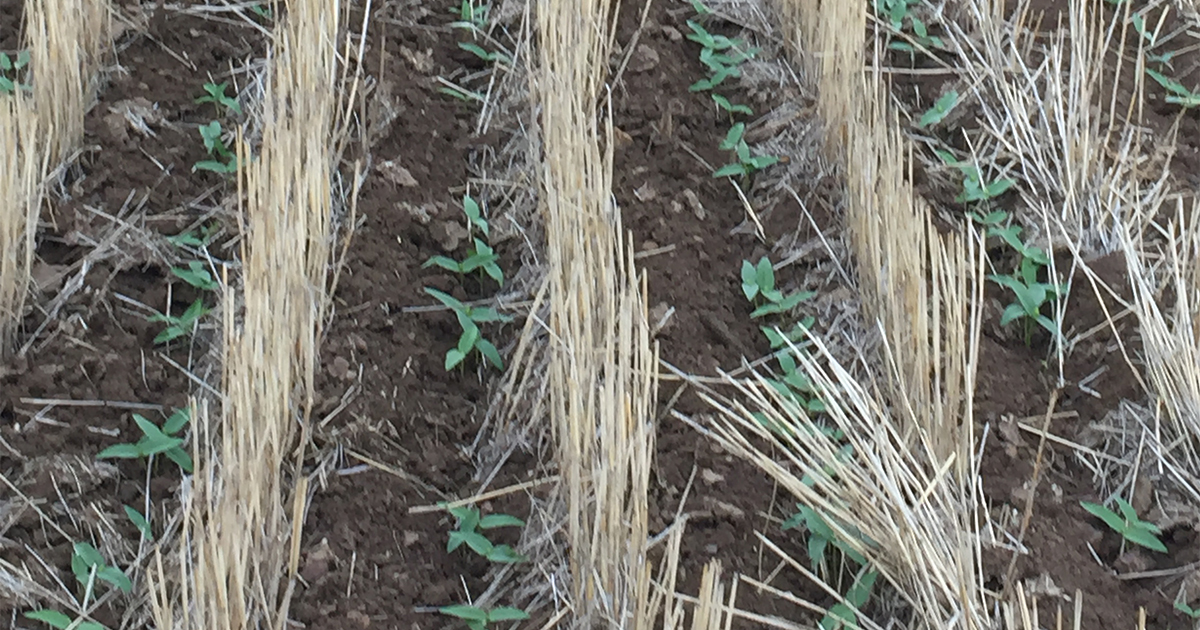 Management notes:
Management notes:
- Fully emerged, 7 days after planting.
- No rain fall since planting.
- Rain is forecast for coming week and would be good to ensure residual herbicide is activated.
- No pest or weed pressure yet.
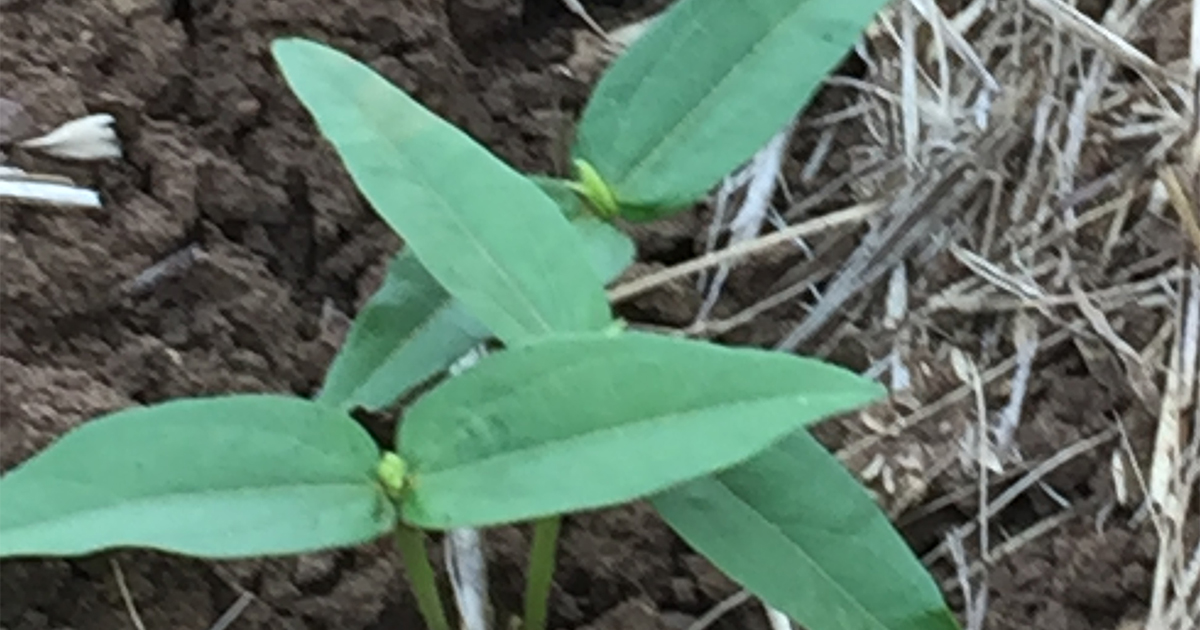 The mungbeans have bounced out of the ground within a week of planting.
The mungbeans have bounced out of the ground within a week of planting.
Week 2
Management notes:
- 4 mm rain fell in past week. More rain is forecast. When the seedlings are small heavy rain can swamp them in the trench created by the tyned seeder but now the plants are 75 to 100 mm tall this is no longer a concern.
- High temperatures are forecast for the next few days. This is not expected to affect the beans much at this growth stage (unlike the impact of high temps when the plants are flowering).
- No insect or weed pressure.
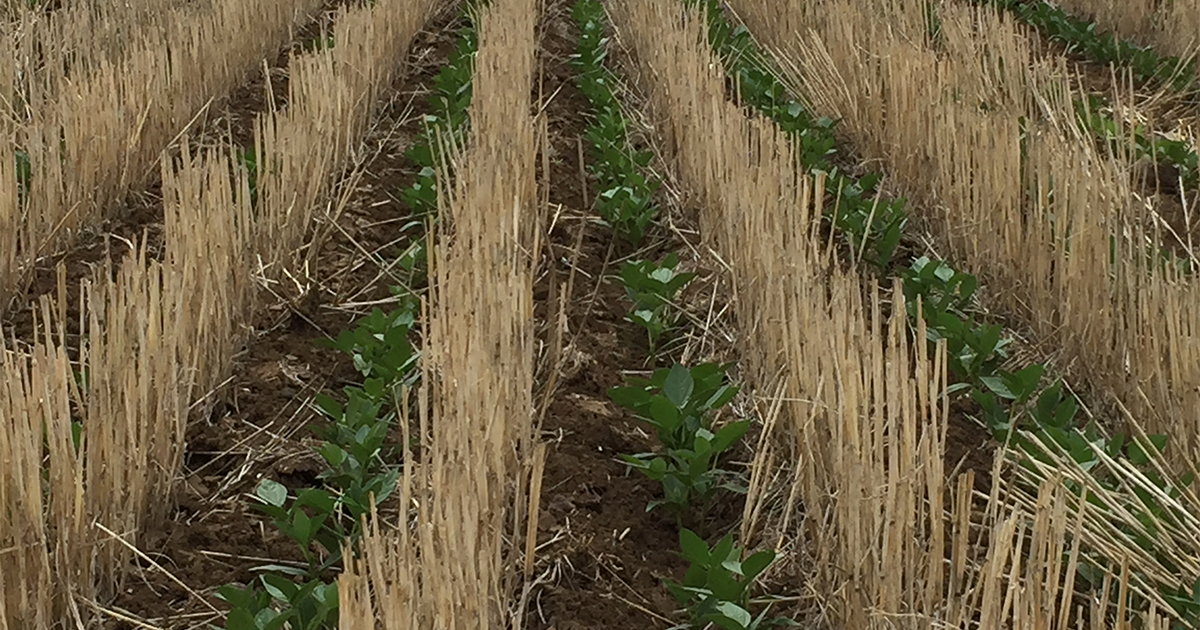 Establishment is strong and the mungbeans are making the most of the rain.
Establishment is strong and the mungbeans are making the most of the rain.
Week 3
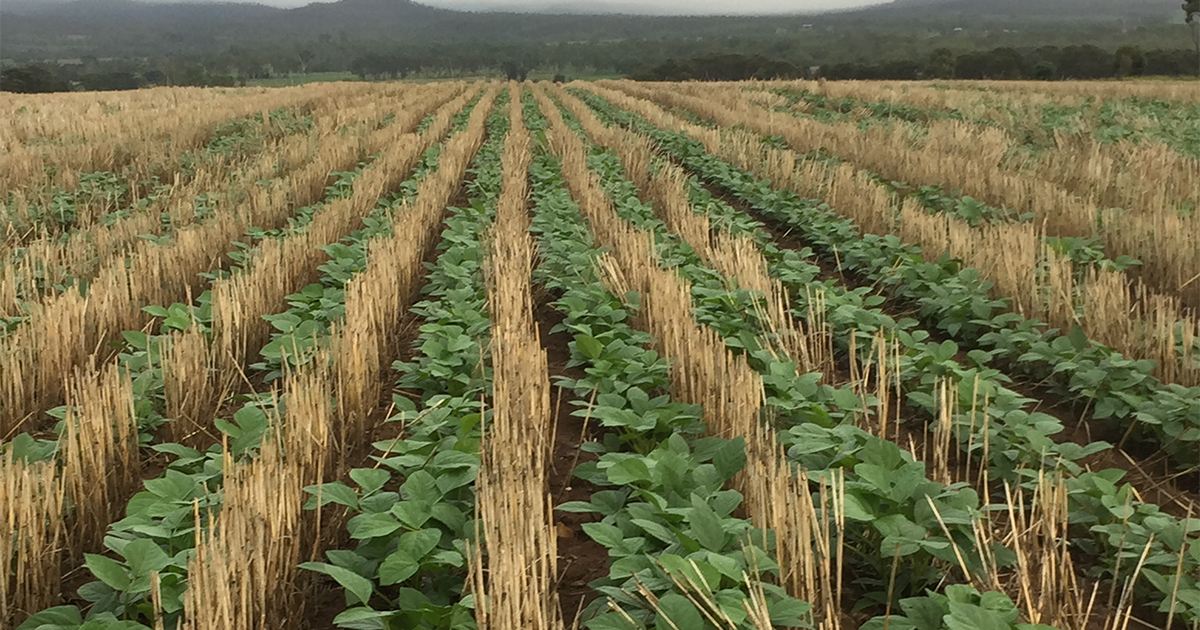
Management notes:
- 27 mm of rain has fallen over the last week and the days have been warm and humid.
- Plants are growing well and look quite healthy.
- Canopy starting to spread out, which will help to keep weeds out.
- No pests visible and no weeds.
Week 4
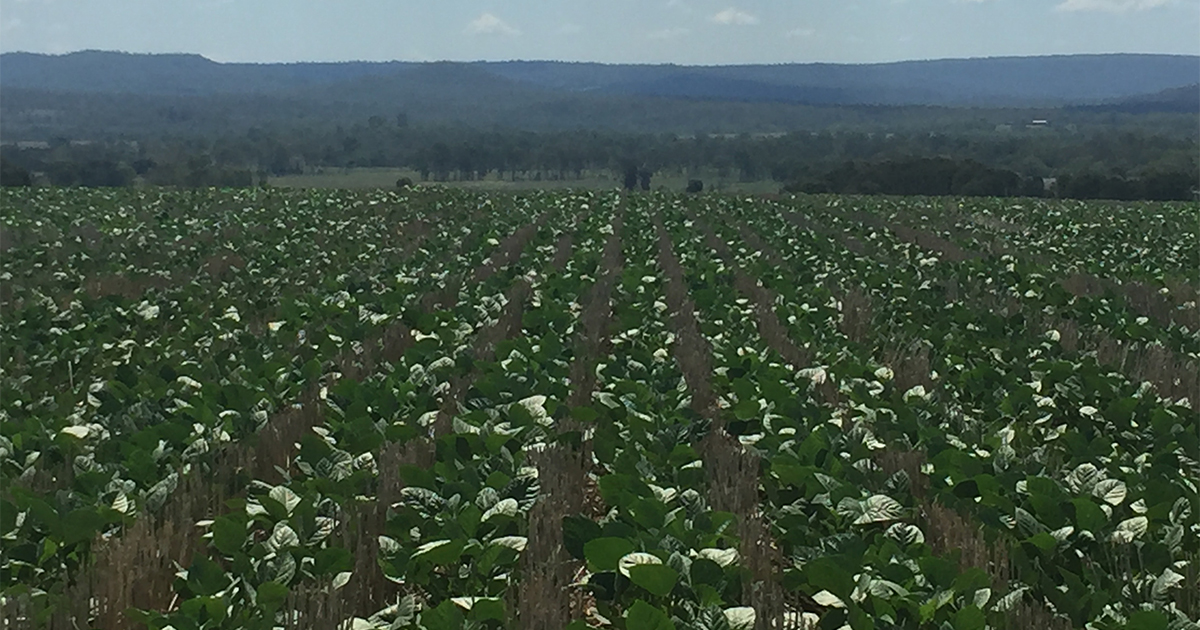
Management notes:
- No rain this week – there has only been 33mm for January in five events, with the largest fall being 15 mm. This is well below the Monto long term average 100 mm in the month of January.
- Day time temperatures have been in the mid to high thirties – despite this beans look good.
- There are no pest or weed pressure yet.
- Rain is forecast for the week with some models suggesting heavy rain. If this is the case Matthew likes the fact that their soil is well protected with straw and the mung bean crop to reduce run off keeping soil, nutrients and water on the field for crop use.
Week 5
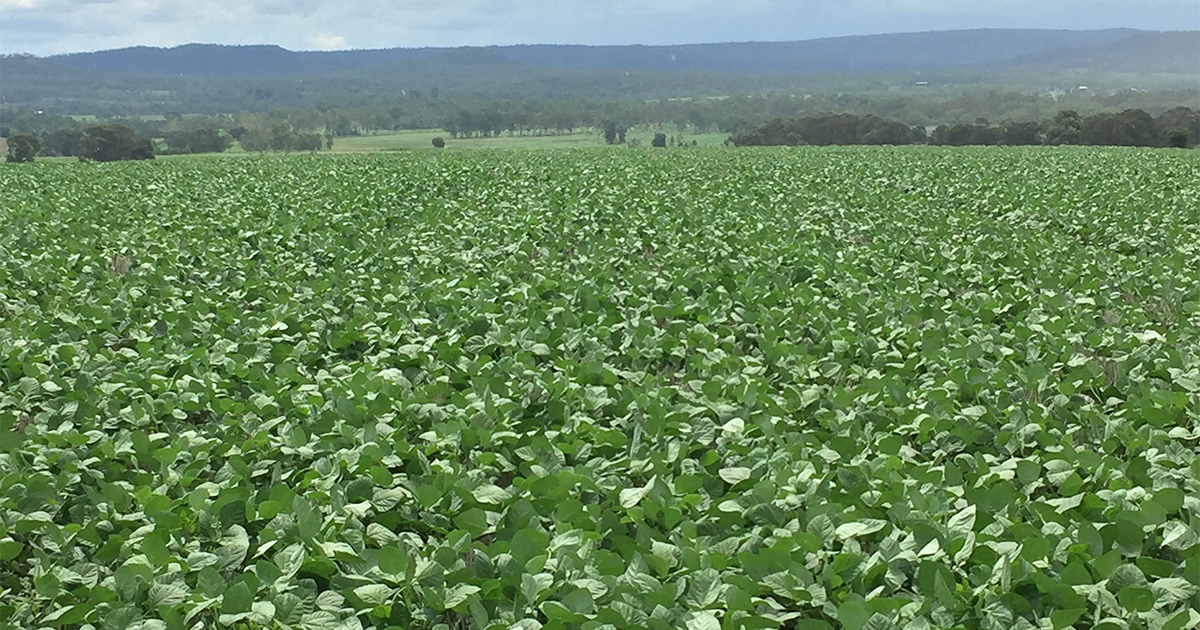
Management notes:
- The rain forecast came to fruition with 104 mm falling in the past week.
- The crop canopy has closed over the inter-row space, providing strong competition for weeds.
- Flowers are starting to appear – this signals the need to increase crop scouting and to avoid the use of pesticides that are not registered for use once flowering has commenced.
- No pressure from weeds or insects yet but now flowers have started to emerge, Matthew will be keeping a close eye out for bugs.
- More storms are forecast for next few days, with temps in mid 30s.
Flowering has started. This signals the need to increase crop scouting.
Week 6
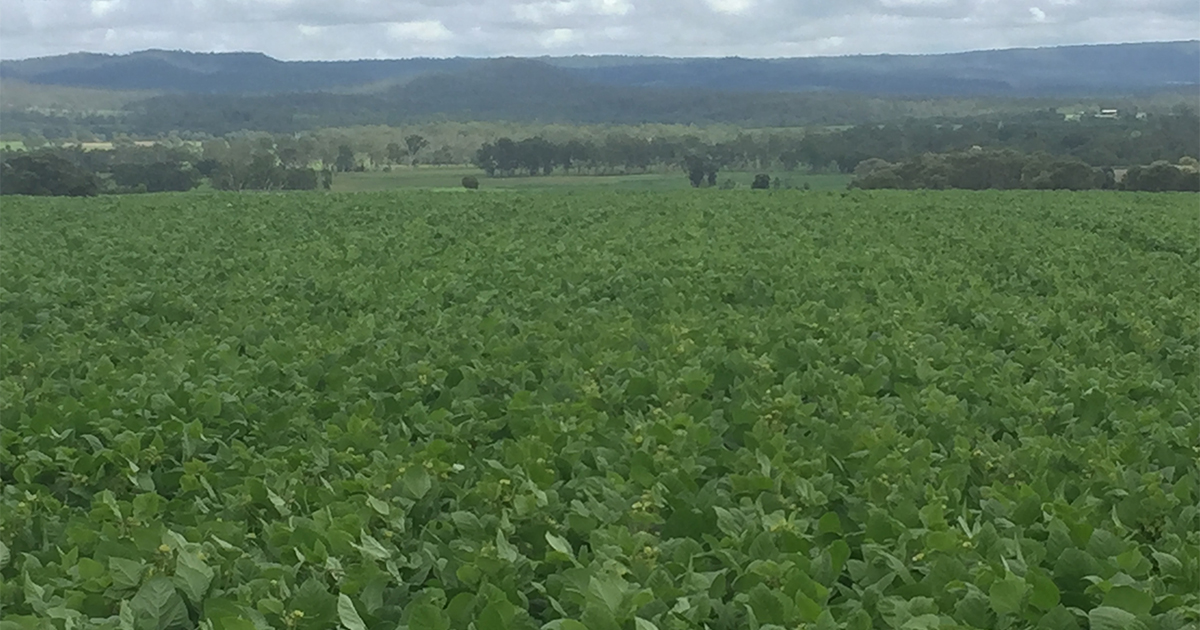
Management notes:
- Rainfall for the week totalled 68 mm. Days were warm and humid days with average max temperatures in the mid 30s.
- Crop has grown to 600 mm high and the canopy has fully closed. No weed pressure and none is expected now that the crop as formed such a dense canopy.
- The crop is still flowering well and some pods are forming.
- Matthew's agronomist has been busy scouting and is concerned that the wet conditions may cause some mildew.
- Bug pressure has been light - mainly red shield bugs, heliothis and some pod borer. Decisions surrounding timing of spraying can be difficult when more wet weather is forecast, potentially making it difficult to access paddocks at the optimal time.
- The wheat stubble has done a great job of preventing soil erosion during the recent storms.
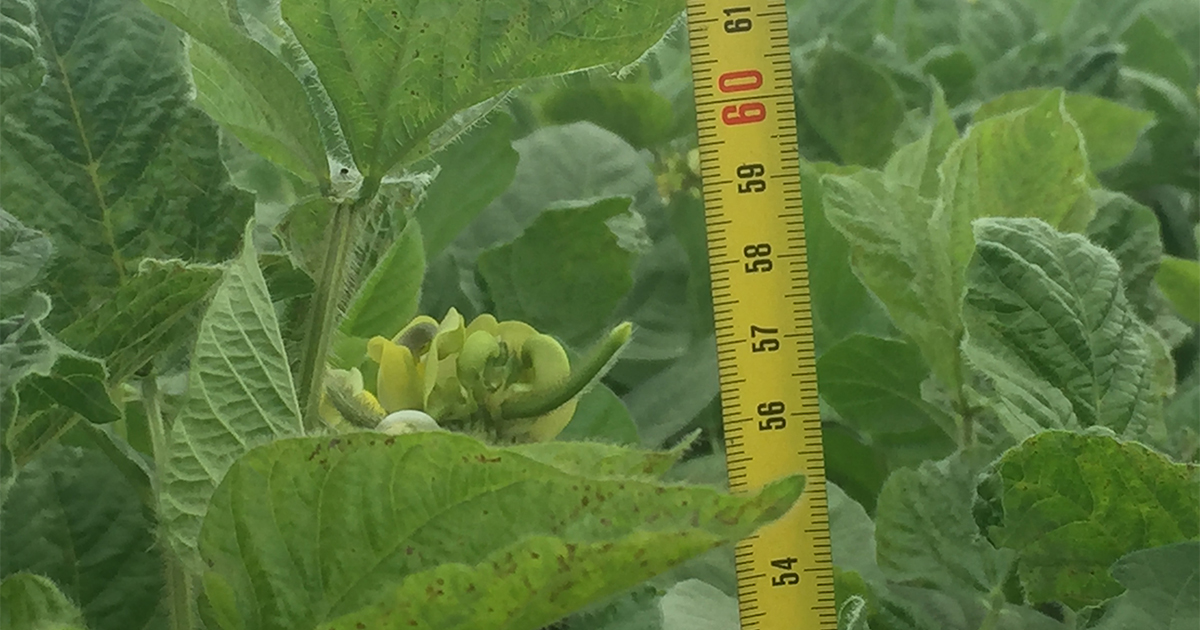 Pods are starting to form.
Pods are starting to form.
Week 7
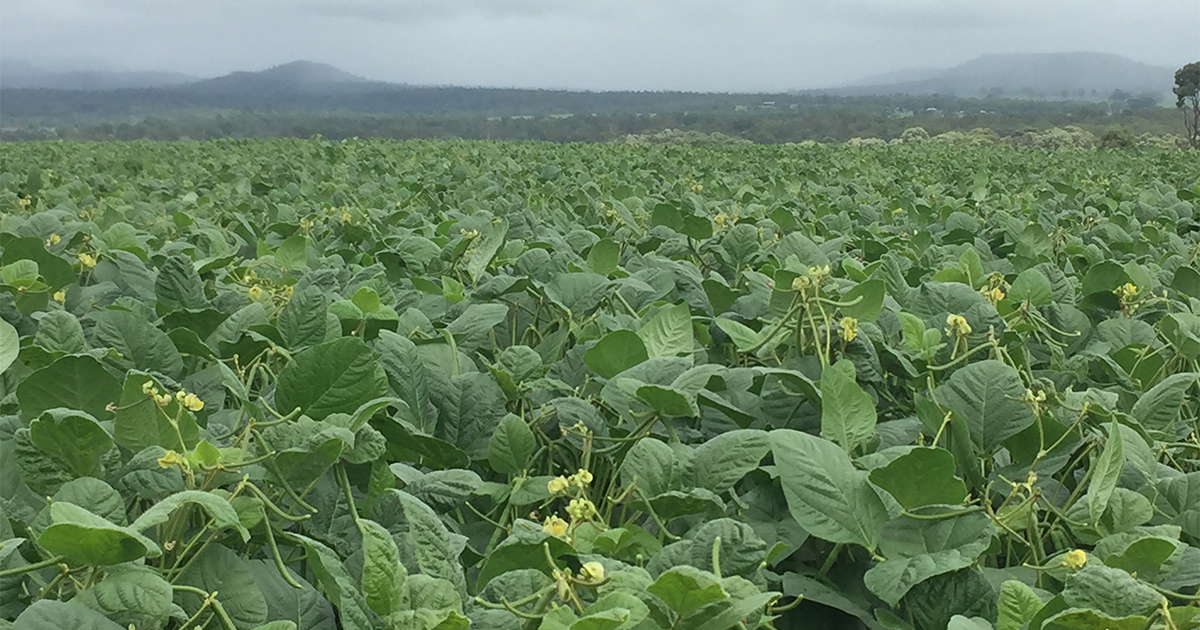
Management notes:
- 8 mm rainfall fell for the week in intermittent showers.
- Warm cloudy days reaching temperatures in the low 30s.
- Helicoverpa moth and grub activity has increased. Helicoverpa population in the mungbeans were 2/m2, predominately medium in size and warranted control.
- Bean pod activity was observed in some of the flowers but control was not warranted.
- No sign of mirids.
- The first sign of red banded shielded bugs population is around the 0.5/m2
- Crop was treated for powdery mildew, which was observed in the lower canopy.
- Crop standing up very well with flowers and pods visible
- Matthew would like to see some sunny days to finish the crop off.
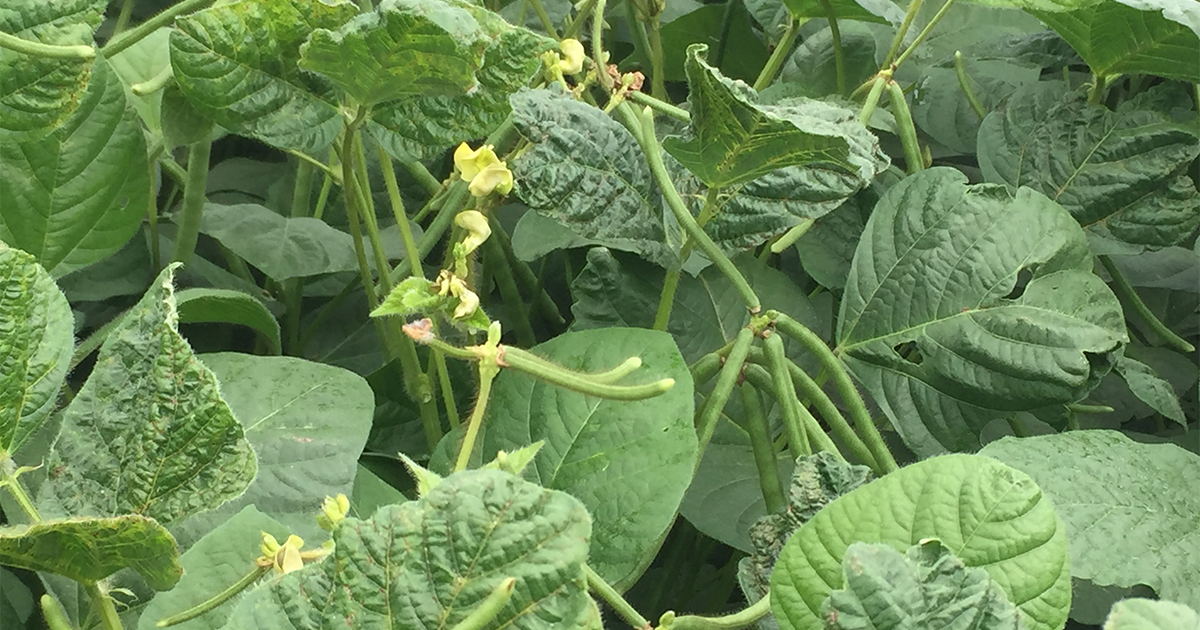 Protecting pods and flowers is now the focus in this crop of Jade-AU.
Protecting pods and flowers is now the focus in this crop of Jade-AU.
Week 8
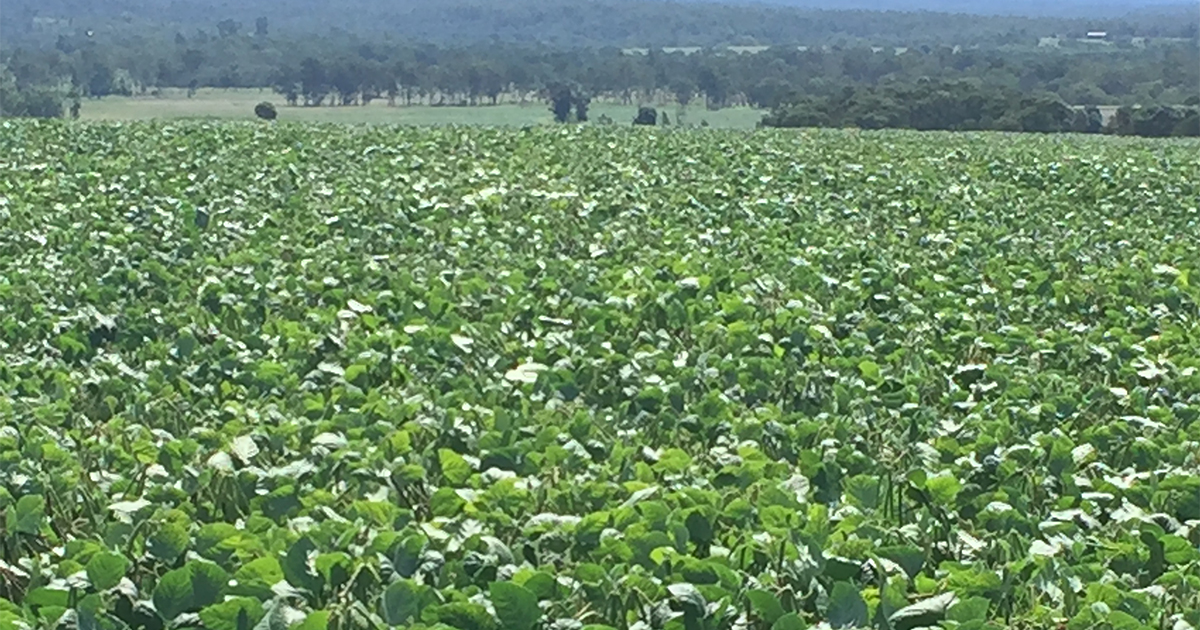
Management notes:
- Crop is starting to ripen off.
- Pods are filling with the odd pod now starting to change colour.
- We had 6 mm rain for week with the last few days fine; with top temperatures of mid 30 degrees C.
- The field has no weeds and Matthew will slash around the outside of crop to prevent any weeds being caught up in header when time comes to harvest.
- There is no insect pressure to mention.
- The outlook is good with strong pricing and expectations of a good yield.
- There is a lot of wet weather forecast for coming days but that shouldn’t worry the crop.
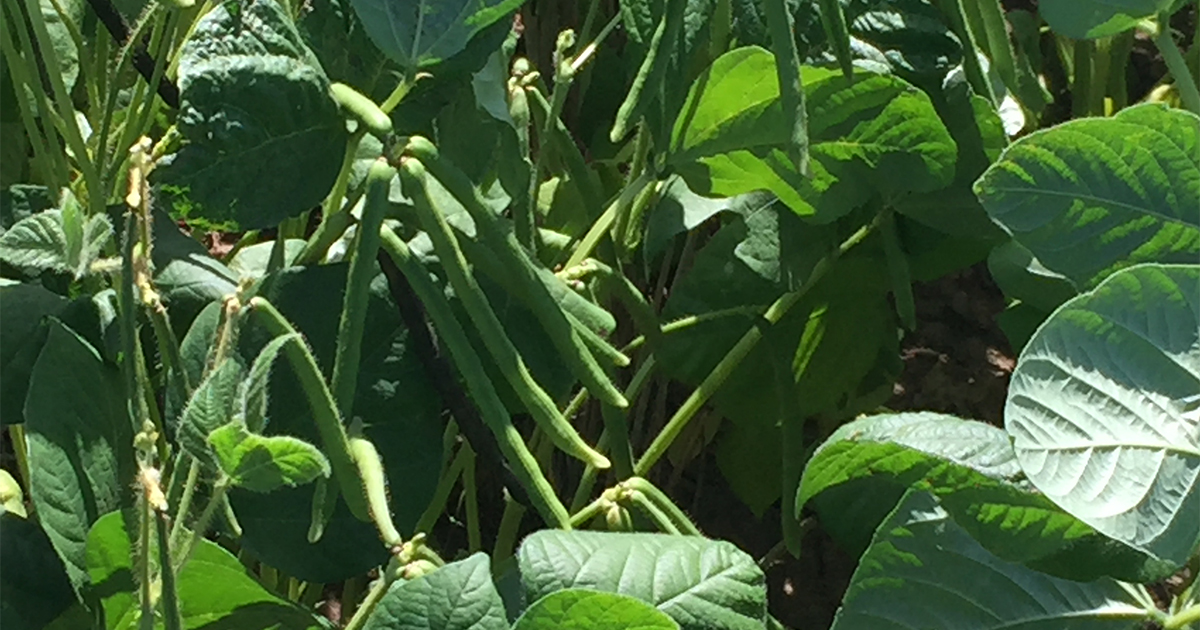 Some pods are ripening – changing from green to black.
Some pods are ripening – changing from green to black.
Week 9
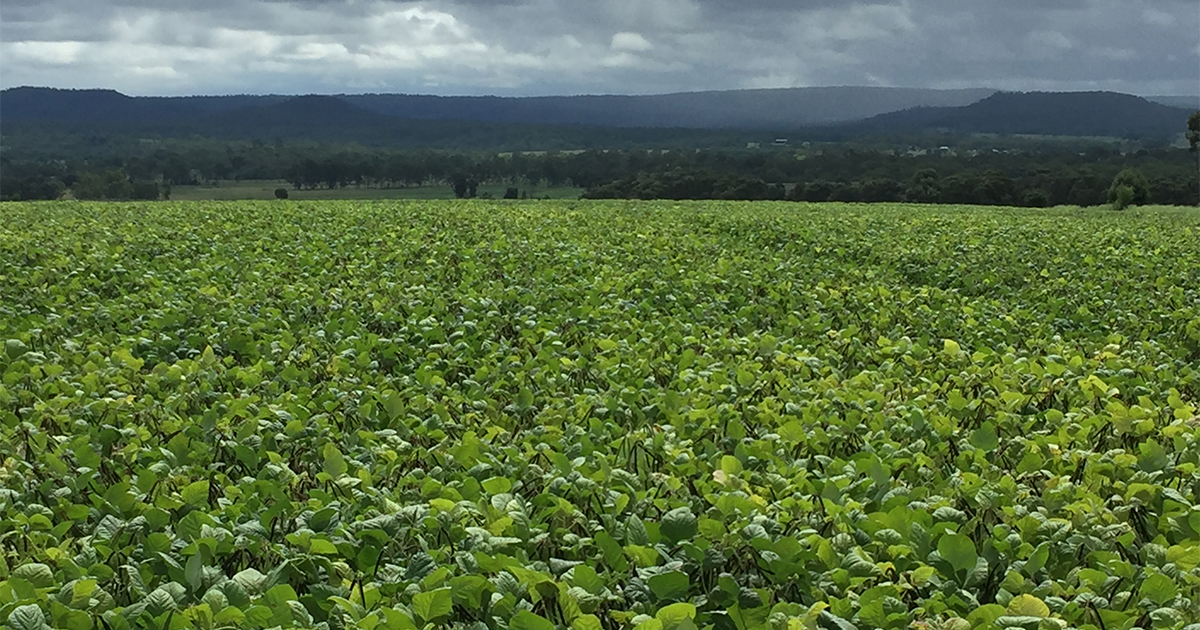
Management notes:
- The beans are starting to ripen very quickly now. Spray out is expected in the next week or so.
- Daytime temperatures were quite mild and the daylength is noticably shortening.
- 10 mm of rain fell this week in intermittent showers.
- Forecast is for fine days for the coming week with the potential for a cyclone to influence weather patterns.
- No insect pressure at all and no weeds.
- Some fine weather between now and harvest would be ideal but Matthew is preparing for what could be a difficult harvest period.
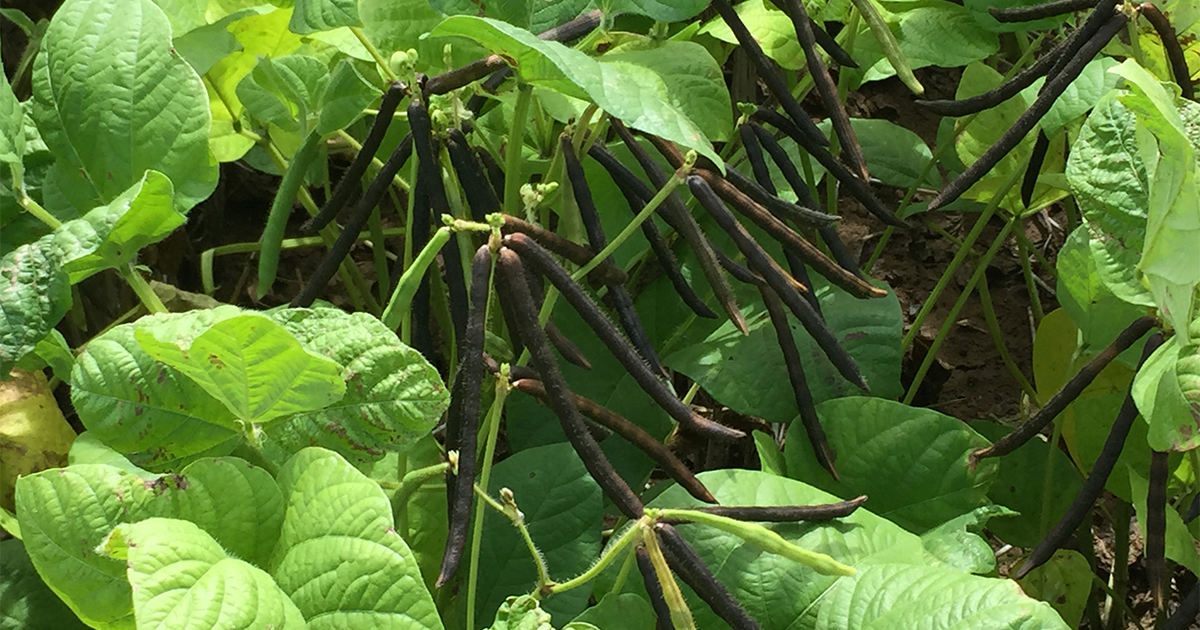 Pods are ripening fast.
Pods are ripening fast.
Week 10
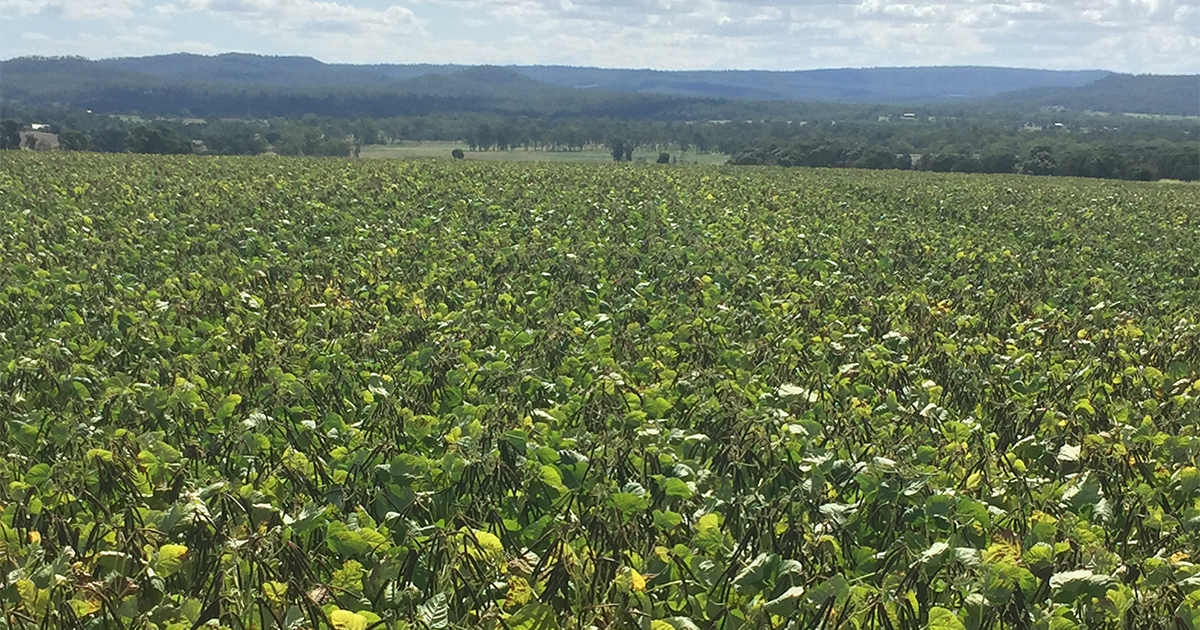
Management notes:
- The mungbeans were sprayed out today (17 March) and Matthew expects to harvest in 7 to 10 days time.
- They have been slashing headlands to make harvesting easier and the crop is nice and high, also making harvesting easier.
- The overnight temps have been down around 15 degrees C and the days have been warm with some quite strong wind at times. This should help dry down of the crop.
- No insect or weed pressure to mention.
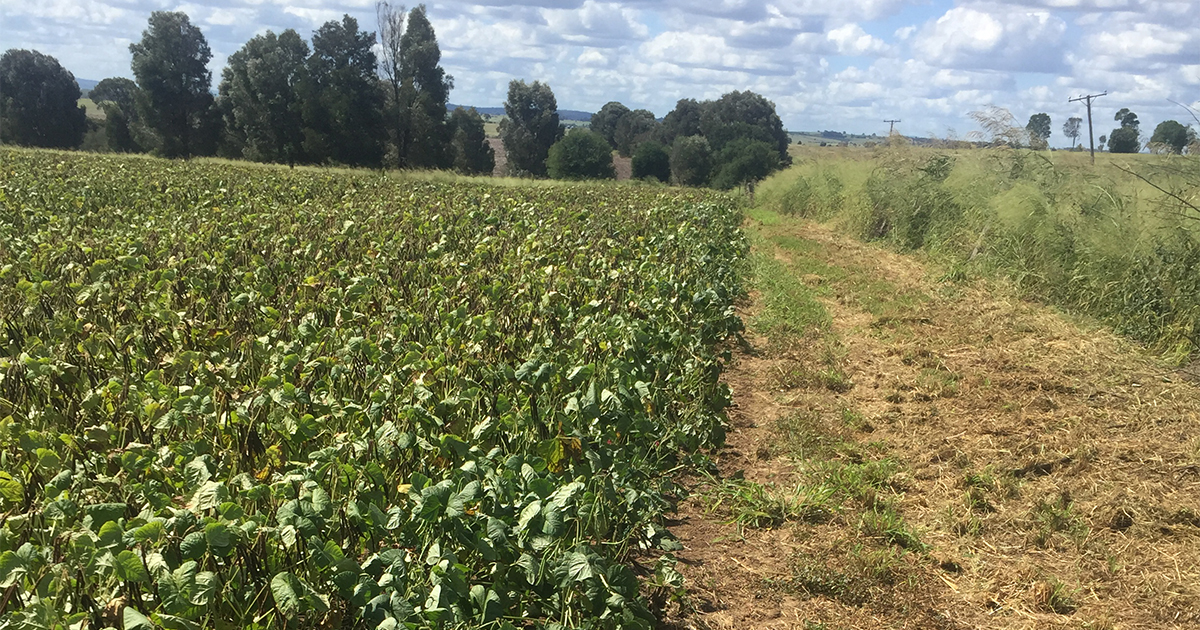 Paddock borders slashed to aid harvest.
Paddock borders slashed to aid harvest.
Weeks 11-12
Management notes:
- The crop is now harvested!
- The yield was around 1.6 t/ha and Matthew doesn’t expect a high % of screenings.
- The sample looks good, with no wrinkles, very few if any splits and a nice bright colour.
- The plant height makes Jade-AU a good variety to harvest.
- The paddock has excellent ground cover and the Patties will now wait for rain with the intention to plant a winter cereal.
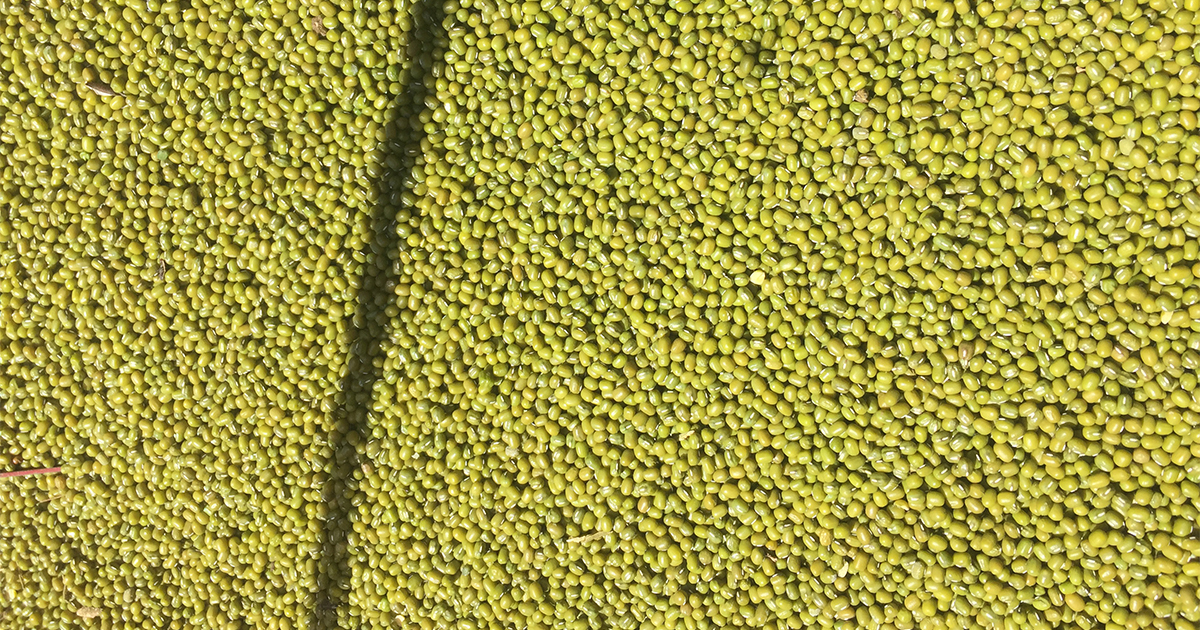
Read Pulse Check blog articles | Pulse Check Coastal facebook | Subscribe to the monthly newsletter

